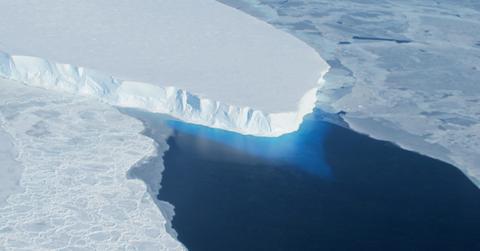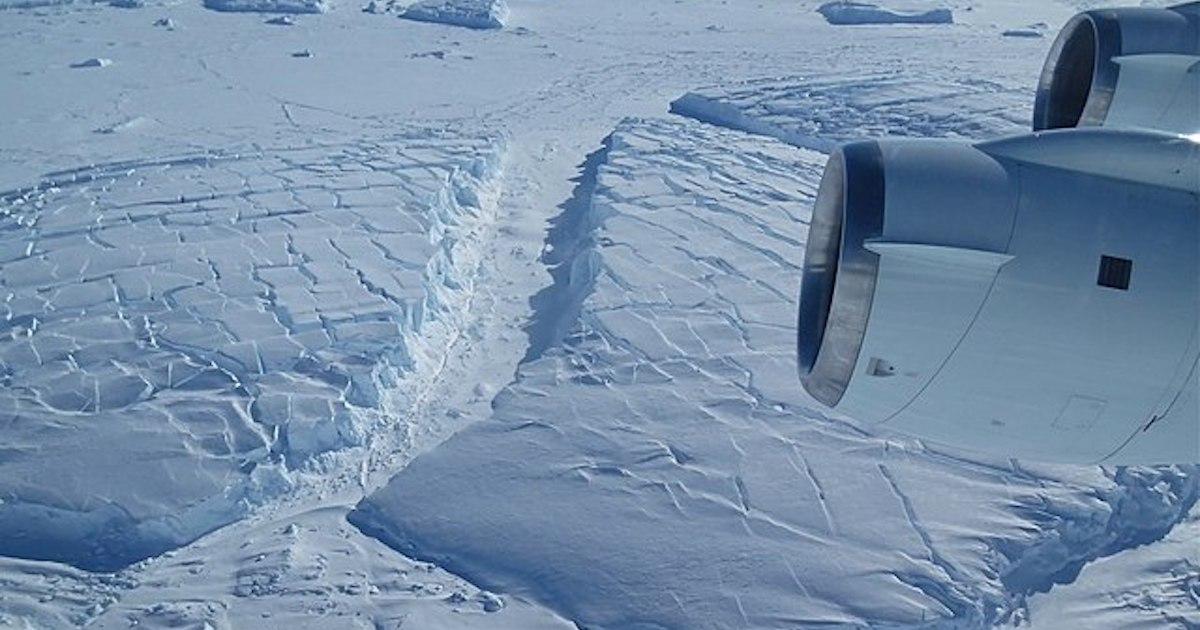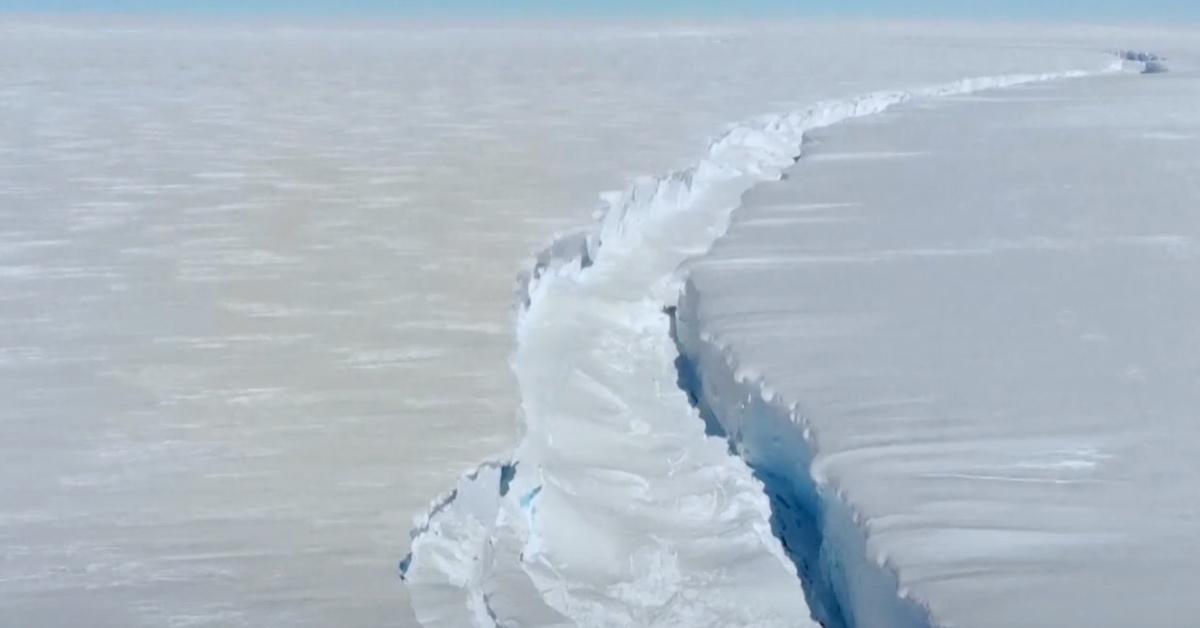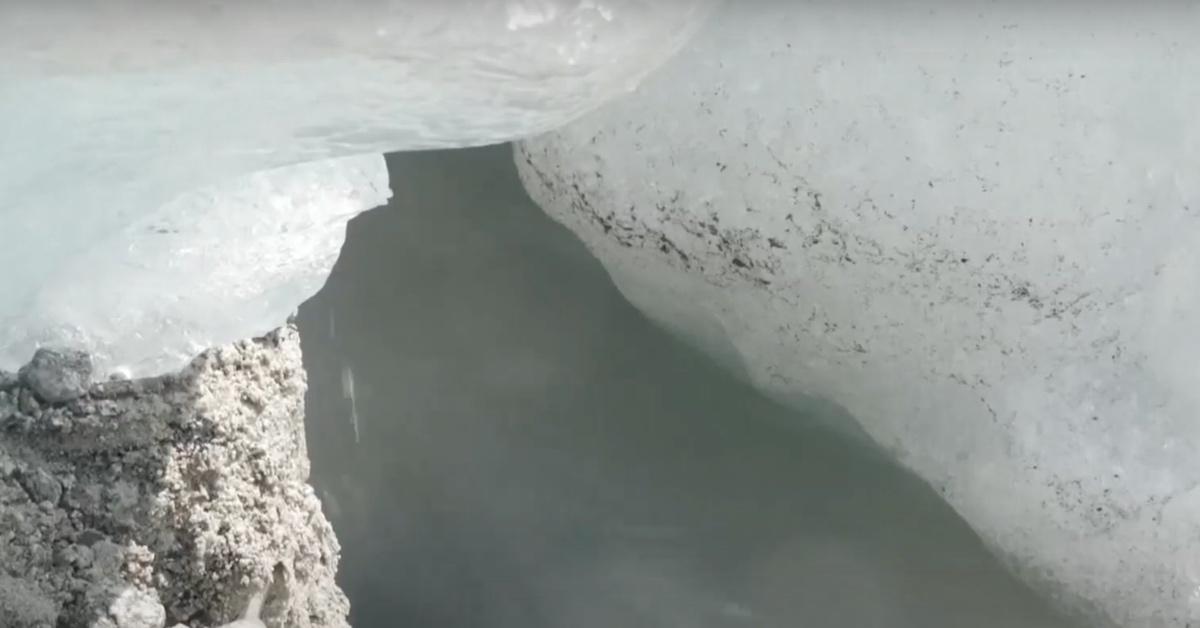The "Doomsday" Glacier is Melting Faster Than Anticipated: What to Know
The "Doomsday Glacier" has an intimidating name, but what should be more terrifying is the reality of climate change.
Updated May 21 2024, 9:14 a.m. ET

The Thwaites Glacier in Antarctica, better known as the doomsday glacier.
In Antarctica, the Thwaites Glacier has become known by a rather ominous name: the “doomsday glacier.” Basically, if the doomsday glacier melts, the sea level rise would be so significant that it could set off a number of other reactions, including putting coastal communities at risk.
For its intimidating nickname, people are constantly curious: is the doomsday glacier really at risk of melting anytime soon? In 2024, not only did scientists discover evidence for when the glacier started melting and why, but unfortunately, it appears that the glacier is melting faster than ever. Keep reading for everything you should know about the infamous "doomsday glacier," explained.

Frozen icebergs near Thwaites Glacier in West Antarctica seen during the Nov. 7, 2014 IceBridge mission.
What is Antarctica’s "doomsday glacier"?
The Thwaites Glacier, located in West Antarctica, is huge — it’s about the size of Florida. According to a report published in December 2021 by the CIRES at the University of Colorado Boulder, a particular ice sheet of the Thwaites Glacier that floats above an underwater mountain is at risk of shattering, posing “the biggest threat for sea-level rise this century.”
BBC News added that the doomsday glacier is already releasing about 50 billion tons of ice into the ocean annually — that’s about 4 percent of worldwide annual sea level rise, according to the CIRES report.
The "doomsday glacier" melting has and will cause catastrophic sea level rise.
A September 2022 study published in the journal Nature Geoscience observed the Thwaites Glacier over the course of 5.5 months. It found that the Thwaites grounding zone retreated at a rate of greater than 2.1 kilometers each year. That is double the rate that satellites observed from 2011 to 2019.
If the glacier were to melt completely, it would cause global sea levels to rise by 65 centimeters (about 25.6 inches, or just over 2 feet), which would be catastrophic.
Even worse, a study published on May 20, 2024, revealed that the "doomsday glacier" is melting at a much more rapid rate than previously thought. The study used satellite radar data to find evidence of high-pressure, warm seawater beneath the glacier.
Study co-author Christine Dow of the University of Waterloo in Ontario told USA Today, "The worry is that we are underestimating the speed that the glacier is changing, which would be devastating for coastal communities around the world."
Study lead Eric Rignot of the University of California−Irvine explained to USA Today that researchers discovered increased seawater flowing into the glacier. These "intrusions make the glacier more sensitive to ocean warming, and more likely to fall apart as the ocean gets warmer."
Rignot also noted that future projections of sea level rise should include the new data, potentially making estimates go up even further than two feet.
As explained by ScienceAlert, the glacier melting could set off a chain reaction of its neighboring glaciers melting too — which would only increase the sea level rise, potentially by several meters. If that happens, many of the world’s major coastal cities would feel the effects, including New York, Miami, Mumbai, Shanghai, and Tokyo. These events could also “swallow” some low-lying islands, essentially causing them to become submerged underwater.
Not to mention, sea level rise has a number of negative effects on the ocean itself, marine life, and underwater ecosystems.
In February 2024, scientists discerned when the "doomsday glacier" started melting.
Research published in the Proceedings of the National Academy of Sciences on Feb. 26, 2024, that isn't yet available to the public, but has been reported on by CNN, stated that scientists spent time analyzing sediment from the ocean floor. They determined that the glacier likely began melting during the 1940s after a strong El Niño.
Unfortunately, since then, the glacier has been unable to recover, which scientists also theorize is the result of global warming.
What’s causing the doomsday glacier to melt?
The warming ocean is what’s melting ice beneath the Thwaites Glacier.
This too-warm ocean water is “attacking this glacier from all angles,” explained Erin Petitt of Oregon State University, as per CIRES. As the water melts the ice on the underside of the glacier, the glacier “loses its grip” on the underwater mountain that it rests on.
But what causes excess warming in the ocean? That would primarily be greenhouse gas emissions, as noted by the IUCN. A few other factors directly contribute to rising ocean temperatures as well, including overfishing.
In February 2023, two studies published in the journal Nature revealed some more detailed findings on exactly what is causing the doomsday glacier to melt. The researchers behind these studies used an underwater robot and data-gathering instruments, which were able to capture the most up-close look of the underside of the Thwaites Glacier in history.
The research helped clarify some information about which parts of the glacier are more sensitive and melt at higher rates; predictions of what will happen to this massive glacier in the future; and how the glacier will affect sea levels.
However, co-author Peter Davis stated that overall, the research presents “neither good news nor bad news” about sea-level rise caused by the Thwaites Glacier, which "is still moving as quickly as it ever has been," as per Nature.
Will the Thwaites Glacier really melt?
As Petitt stated in December 2021, the floating portion of the doomsday glacier probably only has a “few years” left before it completely melts. But as for the entire doomsday glacier, we can expect “major ice loss” over the next “several decades to a few centuries,” according to CERES via Anna Crawford, a researcher who studies ice cliff failure at the University of St. Andrews.
"I visualized it somewhat similar to a car window where you have a few cracks that are slowly propagating, and then suddenly you go over a bump in your car and the whole thing just starts to shatter in every direction," added Petitt in a press conference, as per USA Today.
The climate crisis keeps getting worse before our eyes — and the only way to stop it is with climate action, especially by world governments and industry leaders.
This article, originally published on Jan. 5, 2022, has been updated to include new research.

